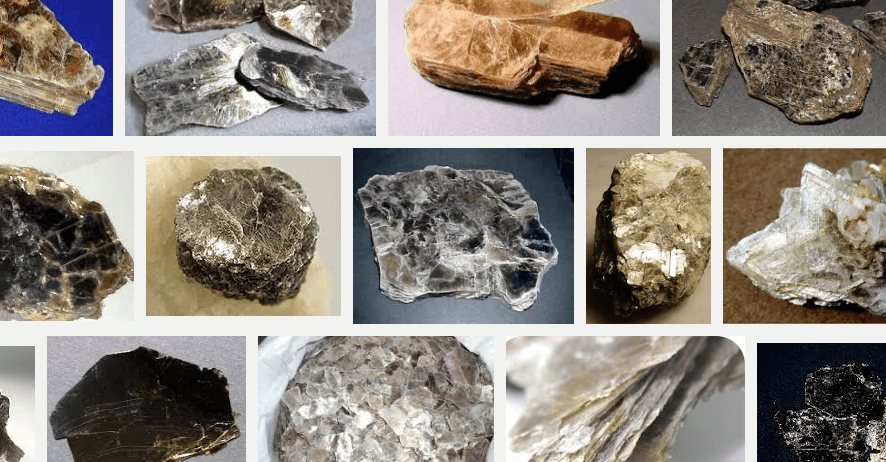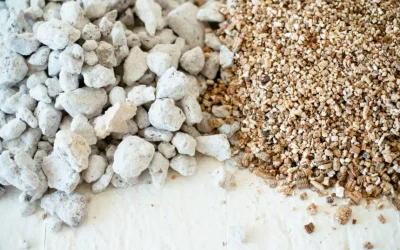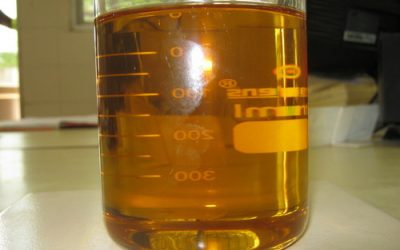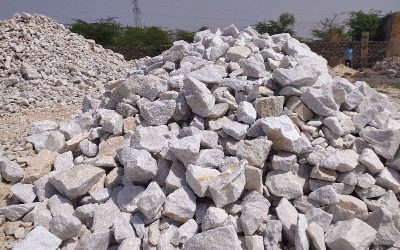What is Mica?
Mica is a silicate mineral which is common in igneouse and metamorphic ricks. Its individual mica crystals can split into thin plates. Micas are used in products such as drywalls, paints, fillers, especially in parts for automobiles, roofing and shingles, as well as in electronics. The mineral is used in cosmetics to add “shimmer” or “frost.”
FAQs on Mica Mineral
Are mica caps poisonous?
This edible fungus can be hazardous if picked from roadsides or polluted terrain, where the mycelium can bioaccumulate toxic metals like cadmium and lead, resulting in mushrooms with high levels of these poisons. Coprinopsis atramentaria, often called as the common ink caps or inky cap, is a fungus that grows in Europe and America and is edible (albeit deadly when mixed with alcohol).
Is mica a natural material?
Mica is a mineral that occurs naturally. There are many different forms of mica, and they may be found all over the world; nonetheless, the beauty industry has long preferred Indian mica due to its high quality.
Is mica a vegan product?
You won’t find a better solution for color grading to your DIY arts and crafts project than this jar of special mica color, which is 100% vegan-friendly, cruelty-free, and maintains batch consistency with each and every order. Ariel Blue Mica Pigment Powder is packaged in a jar.
Is mica a carcinogenic substance?
The potential acute (short-term) health consequences may develop immediately or immediately after Mica exposure: * At this time, there are no acute (short-term) health impacts known. In animals, some silicas have been found to induce cancer. Mica’s risk of developing cancer in people is unknown at this time.
Is it safe to use mica powder?
Because mica can be ground into a tiny powder, it has the capacity to provide a natural shimmering effect. It’s a popular ingredient in natural and organic beauty products because it’s made organically, and it’s safe to use on practically all types of skin with little to no negative effects.
What is the difference between talc and mica?
Baby powder is made from talc powder, which is typically blended with corn starch. This mineral is utilized as a lubricant and thickening agent. Mica is a mineral that is similar to talc in appearance. It achieves a frost or a glow rather than a chalky or matte look. Mica also mixes more completely into your skin than talc, allowing it to dilute color without leaving any of its own color behind.
Is it possible to use mica powder in candles?
Mica hues are a common candle colorant. They’re silicate mineral-based powder colors with a shimmering finish. When added to candles, these particles reflect light and give a sparkling effect. DYES are available in two forms: liquid and powder.
Is it possible to color fabric using mica powder?
Mica powders could be used in almost any project that accepts dye or paint, including the following: Simply dampen a paintbrush and dip it into the selected mica powder hue to utilize mica particles as a natural paint. Unless you want to blend the tones together, always cleanse the paintbrush before switching colors.
Is it possible to use mica powder as an eyeshadow?
Although you can build your eyeshadow with a single hue of mica powder, you may create more distinctive and odd shades by blending several different mica powders together. Only buy mica powder that is intended for cosmetic usage and is safe for using near your eyes.
Is it possible to apply mica powder on your skin?
Mica’s major advantage is that it can be ground to a fine powder, allowing it to give a natural shimmering sheen. It’s a popular ingredient in organic and natural beauty products because it’s made organically, and it’s safe to use on practically all skin types with little to no negative impacts.
What is the process of making mica?
Micas are formed as a result of a variety of procedures and situations. Deposition by fluids produced from magmatic activity, solidifying magmas, deposition of fluid circulation by both touch and regional metamorphism, and alternate processes are all examples of formation processes.
What is the process for extracting mica?
Mica is a naturally occurring silicate crystal dust that is frequently found mixed with granite, crystals, as well as other rocks in India’s mining areas. They come in a variety of earth tones, including off-white, silver, and gold. Mica, on the other hand, has various qualities in addition to its colour. Mica is a naturally occurring silicate mineral dust that is frequently found combined with granite, crystals, and other rocks in India’s mining areas. They come in a variety of earth tones, including off-white, silver, and gold. Mica, on the other hand, has various qualities in addition to its color.
How is mica used in electric iron?
Mica is indeed a good heat conductor. It shields the filament from the electric iron’s outer shell. Mica shields the filament by breaking the insulation and preventing the filament from burning out if an electric current travels through the electric iron and then it accidentally becomes live.
What is the chemical makeup of mica?
Any group of hydrous potassium, aluminum silicate minerals known collectively as mica. It’s a phyllosilicate that comes in a two-dimensional sheet or layer structure. Micas are one of the most common rock-forming minerals, and they can be found in all three types of rocks: volcanic, sedimentary, and metamorphic.
Mica is a colorful powder manufactured from muscovite, a naturally occurring mineral. Muscovite is indeed a silicate mineral that belongs to the quartz family. Mica emerges from the ground as enormous pearlescent layers or flakes with a naturally glittering, iridescent characteristic before being treated.
Epoxy glue, soaps, candles, cosmetics, and sometimes even translucent polymer clay all employ this mineral to impart color and glitter. Although mica varies from pigment powder in that it is used to generate a gleaming or dazzling effect, pigments are the actual colors.
What’s mica in makeup?
Mica refers to a collection of silicate minerals that can be broken down into a gleaming powder for use in cosmetics, earning it the nickname “nature’s glitter.” Based on the most recent scientific study, the Good Face Index determined that mica is non-toxic as a cosmetic ingredient.
Is mica OK for use on the face?
Mica’s light-reflective properties make it ideal for imparting a healthy-looking glow to the complexion, and it can even be used to lighten a gloomy under-eye area. Mica comes in a wide range of colours, while it is most commonly used in cosmetics in its pearly white form.
Is mica a healthy substance to use?
Mica is listed as a color additive exempt from certification by the US Food and Drug Administration (FDA). Mica is safe to use in coloring items, such as personal care products that are applied to the lips and eye area.
What’s the deal with mica?
Mica dust inhalation for a long time can induce lung scarring, which can cause coughing, shortness of breath, fatigue, and losing weight. POPULATIONS AT RISK: Cosmetics factory workers, mining workers, mill workers, agricultural workers, and construction workers.
When was the first time mica was used?
Mica was used for the first time in cave paintings dating back to the Upper Paleolithic epoch (40,000 BC to 10,000 BC). Micas are organic minerals that can be found in quarried rock. Muscovite mica, biotite, and phlogopite are the most prevalent mica crystals found in rocks and structural components. Mica impurities are expected to be limited to a total of 1 percent in building blocks.
Is Coprine found in Mica Caps?
Micaceus has been discovered to be devoid of coprine, a disulfiram-like compound found in Coprinopsis atramentaria which causes disease when ingested with alcohol.
When were mica houses built?
Mica blocks may impact homes built between 1980 and 2011, according to the action organization. Mica and pyrite are materials that were used in the construction of thousands of homes during the Celtic Tiger era. Advertisement. Mica-rich defective blocks can absorb the water and produce cracking on both the external & internal walls.
In Donegal, when were mica houses built?
A considerable number of buildings in Donegal were built with concrete construction blocks containing excessive levels of mica, primarily from the late 1990s until 2011 and maybe beyond. Mica levels of almost 17 percent have been discovered in blocks in several of the affected properties in Co Donegal. Mica draws moisture from the air, weakening the strength of blocks over time, leading them to crack and disintegrate.
Why is mica bad?
Inhalation is the most serious hazard related with mica. Mica can be harmful if inhaled, as the particles can enter the lungs & cause scarring. As a result, any powder and aerosol product containing mica should be avoided. Exposure to high levels of dust on a regular basis might irritate the lungs and lead to lung scarring (fibrosis). This results in a chest x-ray that is abnormal, as well as coughing and chest tightness.
Can mica be painted?
Sun mica has a glossy, non-porous, and scratch-resistant surface. The majority of people believe it is impossible to paint. To respond to your query, yes, sunmica can be painted. Yes, you may paint laminate and sun mica furniture.
Can mica powder be used in soap?
Micas perform well in melt & pour soap since they don’t morph. If you’re working with a clear, transparent, or translucent base, 1/2 teaspoon per pound will give you a lovely, strong pearl effect. Simply dissolve the powder in your melt & pour a soap base.
What is your preferred method of applying mica powder?
Mica powders can be utilized in almost any project that requires the application of dye or paint, such as: Simply dampen a paintbrush before dipping it into the selected mica powder hue to utilize mica particles as a natural paint. If you don’t want to blend the tones together, cleanse the brush before switching colors.
Can mica powder be mixed with water?
Spray mica powder on your paper with water. The pages of your diary or scrapbook will be bright and shimmering as a result of this. Have a blast! Mix the mica flakes with your oil or acrylic painting medium.
How are mica sheets made?
Prior to producing a sheet, mica is ground dry to produce finely separated mica particles. By pouring a colloid mixture comprising ground mica, water, and a colloid agent onto a mesh screen, a single sheet of constant thickness is created at once. The creation of a sheet is completed using vacuum and a hydraulic press.
What is the process for making mica?
To enhance strength, mica sheets are hard-pressed together with a resin ingredient. The key phases in this technique are to soak the material in resins and then to dry it. A manufacturing procedure combining both high temperature and pressure is required to glue sheets together.
Mica is a naturally occurring stone mineral with gleaming flakes. Mica powder is generated once the mica stone is processed into a powder. When it comes into touch with a variety of surfaces and materials, the powder transforms into a soft kind of fine glitter that colours or dyes them.
Is mica powder a natural product?
Mica is a mineral that occurs naturally in rocks all around the world. Mica powder is made by grinding down the microscopic, gleaming flakes from the rocks. This powder resembles fine glitter & comes in a variety of colors and effects, making it an excellent natural colorant.
Is mica powder environmentally friendly?
This Mica powder, with its *glittery* look, is plastic-free and environmentally friendly. Mica has particle sizes that are extremely similar to fine glitter particle sizes. In bath bombs, use as a garnish rather than a solid colour. For bath bomb colourants, we recommend Wonder Colors.
What’s the best way to manufacture mica powder out of pigments?
Start with a plain white color when blending mica powder with cosmetics. Titanium dioxide & zinc oxide are common ingredients in cosmetics because they give excellent coverage and are resistant to heat and light. You can start with white pigments and add different colors to create the hue you want.
Mica is a mineral that can be found in India.
Mica deposits can be found on the Chota Nagpur plateau’s northern edge. Jharkhand’s Koderma Gaya – Hazaribagh region is the leading producer. Around Ajmer in Rajasthan is where the majority of mica is produced. Andhra Pradesh’s Nellore mica area is also a major producer in the country. In India, mica mines are only found in two states: Bihar and Jharkhand, both of which are among India’s poorest. Because of the country’s poor government, the business is subject to few, if any, rules, and labor abuse of both adults and children is common.
In India, how many mica mines are there?
Mica production in India is among the best in the world. The business was damaged by legislation in the 1980s to prevent deforestation and the discovery of alternatives for natural mica, forcing most mines to close owing to cost and stringent environmental laws.
Where is the majority of mica mined?
Mica is found in abundance in India, particularly in Bihar and the Madras district of Nellore. These two regions provide more than half of the mica used today. Belgium, Brazil, and China are the other significant producers. All varieties of mica are employed in industry in two different ways.
What makes mica so valuable?
However, due to its numerous applications in modern items, it has become a precious commodity. Mica is responsible for the shine in cosmetics such as mascara, nail paint, lipstick, and concealer. Mica is used to make car paintwork shine, as well as in construction materials and as an insulator in computer chips.
Which type of laminate is best for a kitchen?
Acrylic Finish Laminates- Give your kitchen a high-end modern appeal with acrylic finish composite material. These are extremely durable and have a high-gloss reflecting coating that comes in a variety of colors. Acrylic laminates have a moisture-resistant finish and are very resistant to fading from UV radiation. PVC is corrosion, termite, heat, and water resistant, making it excellent for kitchen cupboards and counters.
Why is mica used as insulation?
Mica has a variety of qualities that make it adaptable to a variety of applications. It is a good industrial insulating material due to its strong thermal resistance. It is resistant to electricity, light, & moisture, making it suitable for a wide range of applications in many industries.
Which mica is best for a wardrobe?
Glossy Finish is the most popular sunmica finish for cabinets. It’s simple to clean and maintain, and it gives the furniture a nice appearance. In terms of cost, acrylic is one of the most expensive finishes for cupboards and kitchens. The glazed appearance that this material produces is both attractive and easy to maintain. As a result, acrylic should not be used on high-touch surfaces since it collects fingerprints.
Which mica is best for doors?
Sun mica in various colors can be used for this purpose. This sort of flush door can be painted in a variety of colors, including gray, brown, and even black.
What’s the distinction between Mica and Sunmica, and how do you tell the two apart?
Sunmica is referred to as Mica in abbreviated form. Mica is a form of laminate that is widely utilized throughout the Indian Subcontinent. It’s essentially an ornamental laminate sheet that’s applied to a wooden surface as an overlay. Laminates were once referred to as “sun mica” or “mica.”
Why is mica used in the electrical and electronics industry?
Any member of the mica category of silicate minerals that contains calcium instead of potassium or sodium is known as brittle mica. The calcium replacement raises the aluminum-to-silicon ratio, which improves hardness. As a result, instead of bending, it breaks. Brittle micas include margarite and clintonite.
Is mica powder stain-resistant?
Nobody wants particularly dark-colored shower gels that affect the color of the entire tub of water. Children adore vivid colors, but you should avoid using clays, charcoal, or mica since they can stain if used excessively.
Mica is safe for about all skin types when applied topically to the skin, including the eyes and lips. It only bothers sensitive skin, as you could have anticipated. The truth is that mica is derived from crushed rock.
Will mica stick to a magnet?
If you can find an extremely powerful magnet, rub it against your weakened magnet repeatedly. The magnetic regions inside the weakened magnet will be realigned by the strong magnet [source: Luminaltech]. Stacking magnets Stacking weak magnets together is one approach to make them stronger.
Can mica powder be used in lip gloss?
VERSATILE VALUE: These powdered color pigments can be used in a variety of ways. Mica powder can be used to make lip gloss, soap dye, epoxy resin colour pigment, slime pigment powder, candle manufacturing, nail art, embossing, screen printing, cosmetic colourant powder for blush, and bath bombs.
Can mica powder be used as eyeshadow?
Although you can build your eyeshadow with a single hue of mica powder, you may create more distinctive and odd shades by blending several different mica powders combined. Only buy mica powder that is intended for cosmetic usage and is safe to use near your eyesight.
Is it possible to apply makeup using mica powder?
Getting the Most Out of Your Mica Powder Make cosmetics with the powder. Mica powder can be used as eyeshadow, concealer, and lip gloss on the face. It can be used on its own or incorporated with existing eye makeup, foundation, as well as other products after being combined with the appropriate media.
Can mica powder be used in candles?
Micas aren’t particularly prone to fading because they don’t migrate or bleed, but most crafters advise against the use of mica powder to color candles because it doesn’t dissolve into the wax. As a result, the minute particles can block the wick of the candle, resulting in a lower flame.
Is it possible to mix mica into concrete?
There’s a hot new entry inside the market if you’re seeking for a rock that will wow. Mica is a gemstone that adds glitter to floors when used in conjunction with polymer-based systems designed for use over concrete.
Is it possible to color fabric with mica powder?
Mica powders can be used in almost any project that accepts dye or paint, including the following: Simply dampen a paintbrush and dip it into the selected mica powder hue to utilize mica powders as an organic paint. Unless you want to blend the tones together, always cleanse the brush before switching colors.
What is the difference between mica powder and color powder?
The distinction between Mica powder and color powder is frequently misunderstood. Mica Powder has a shimmering, glossy appearance, whereas regular color pigment seems to have a matte aesthetic. The powder has a wide range of applications, including beauty goods, healthcare products such as lotions and detergents, and creative supplies.
Is it possible to tint wax melts with mica?
One technique to achieve a delightful shimmering appearance is to add mica to your wax melt recipe. Mica could also be used to adorn wax melts like paint. To make mica “paint,” you’ll need a small bit of rubbing alcohol.
Bioglitter is a vegetable starch sparkle that is safe for the environment and your skin. It’s also non-flammable, which is important when working with wax and burns.
Is mica a good investment?
Prices for sheet mica vary by grade, ranging from less than $1 per kilogramme for reduced mica to more than $2,000 per kilogramme for high-quality mica. It is also mined artisanally in Madagascar and India, in poor working conditions and with the assistance of child labour.
What is the source of mica?
Mica is found in abundance in India, particularly in Bihar and the Madras district of Nellore. These two regions provide more than half of the mica used today. Belgium, Brazil, and China are the other significant producers.
Mica is conductor or insulator?
Mica, in particular, is unique in that it is both an excellent electrical insulator and a good thermal conductor. Block mica is most commonly used as an electrical insulator in electronic devices.
Is mica a heat and electricity conductor?
Mica’s primary characteristic is that it conducts heat but not electricity. As a result, mica has a strong dielectric effect, making it perfect for applications requiring both heat conductivity and electrical insulation.
mica is metal or nonmetal?
Mica is a non-metallic, lustrous material utilized extensively in the electrical and electronic sectors. Mica has a number of properties that make it valuable, including the fact that it comes in thin sheets and is a non-conductor of electricity and heat. Muscovite has a non-metallic, lustrous luster, a transparent to translucent appearance, one flawless cleavage, and thin, stretchy sheets.
What do we do at Kumarasamy Industries?
Kumarasamy Industries is a leading mica manufacturer in India with export to more than 20 counties in the world.
Contact us for requirements in Mica products.



